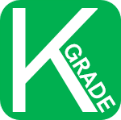ARCHIVED BPS District Mathematics Standards Book (2017-2023)
Completion requirements
K-8 Grade Levels
Kindergarten
Kindergarten Math
"I can ... statements"
 Young children arrive in kindergarten with widely varying knowledge in math. By the end of the year, your child must have some important foundations in place. One of the most important skills your child should develop is the ability to add and
subtract small numbers and use addition and subtraction to solve word problems. This will rely on gaining some fundamentals early in the year, such as counting objects to tell how many there are. Addition and subtraction will continue to be a
very strong focus in math through 2nd grade.
Young children arrive in kindergarten with widely varying knowledge in math. By the end of the year, your child must have some important foundations in place. One of the most important skills your child should develop is the ability to add and
subtract small numbers and use addition and subtraction to solve word problems. This will rely on gaining some fundamentals early in the year, such as counting objects to tell how many there are. Addition and subtraction will continue to be a
very strong focus in math through 2nd grade.
MAT-00.CC Domain:
-
- MAT-00.CC.01 Count to 100 by ones and by tens. Count backward from 20 by ones
- MAT-00.CC.02 Count forward beginning from a given number within 100. Count backward from a given number within 10
- MAT-00.CC.03 - Write numbers sequentially from 0 to 20. Write a given number from 0 to 20
- MAT-00.CC.04 Understand the relationship between numbers and quantities up to 20; connect counting to cardinality.
- MAT-00.CC.04.a Use one to one correspondence when counting objects.
- MAT-00.CC.04.b Understand that the last number name said tells the number of objects counted, regardless of their arrangement or order in which they were counted.
- MAT-00.CC.04.c Understand that each successive number name refers to a quantity that is one more.
- MAT-00.CC.05 Count to answer how many? questions.
- MAT-00.CC.05.a Tell how many objects up to 20 are in an arranged pattern or up to 10 objects in a scattered configuration.
- MAT-00.CC.05.b Represent a number of objects up to 20 with a written numeral.
- MAT-00.CC.05.c Given a number from 1-20, count out that many objects.
- MAT-00.CC.06 Identify whether the number of objects in one group is greater than, less than, or equal to the number of objects in another group, using groups of up to 10 objects.
- MAT-00.CC.07 Compare two numbers between 1 and 10 presented as written numerals.
MAT-00.OA Domain:
[OA] Operations and Algebraic Thinking
-
- MAT-00.OA.01 Represent addition and subtraction in a variety of ways
- MAT-00.OA.02 Use an appropriate strategy to solve word problems that involve adding and subtracting within 10.
- MAT-00.OA.03 Decompose numbers less than or equal to 10 into multiple combinations of two parts. Record each decomposition with a drawing or equation.
- MAT-00.OA.04 Find the number that makes 10 when added to a given number from 1 to 9. Record with a drawing or equation.
- MAT-00.OA.05 Fluently add and subtract within 5.
- MAT-00.OA.05.a - Fluently add basic facts within 5
- MAT-00.OA.05.b - Fluently subtract basic facts within 5
MAT-00.NBT Domain:
[NBT] Number and Operations in Base Ten
-
- MAT-00.NBT.01 Compose and decompose numbers from 11 to 19 using a group of ten ones and additional ones. Record each composition or decomposition with a drawing or equation.
MAT-00.MD Domain:
-
- MAT-00.MD.01 Describe measurable attributes of objects, such as length or weight. Describe several measurable attributes of a single object
- MAT-00.MD.02 Compare two objects with a common measurable attribute and describe the difference
- MAT-00.MD.03 Classify objects into given categories limiting the number in each category to 10 or less. Count the numbers of objects in each category and sort the categories by count
MAT-00.G Domain:
-
- MAT-00.G.01 Describe objects in the environment using names of shapes and solids.
- MAT-00.G.02 Correctly name shapes and solids regardless of their orientations or overall size
- MAT-00.G.03 Identify shapes and solids as two-dimensional or three-dimensional
- MAT-00.G.04 Compare and classify two-dimensional shapes of different sizes and orientations, using informal language to describe their similarities, differences, and attributes
- MAT-00.G.06 Compose a new shape by combining two or more simple shapes.
A Sample of What Your Child Will Be Working on in Kindergarten
- Counting objects to tell how many there are
- Comparing two groups of objects to tell which group, if either, has more; comparing two written numbers to tell which is greater
- Acting out addition and subtraction word problems and drawing diagrams to represent them
- Adding with a sum of 10 or less; subtracting from a number 10 or less; and solving addition and subtraction word problems
- Adding and subtracting very small numbers quickly and accurately (e.g., 3 + 1)
- Correctly naming shapes regardless of orientation or size (e.g., a square oriented as a “diamond” is still a square)

